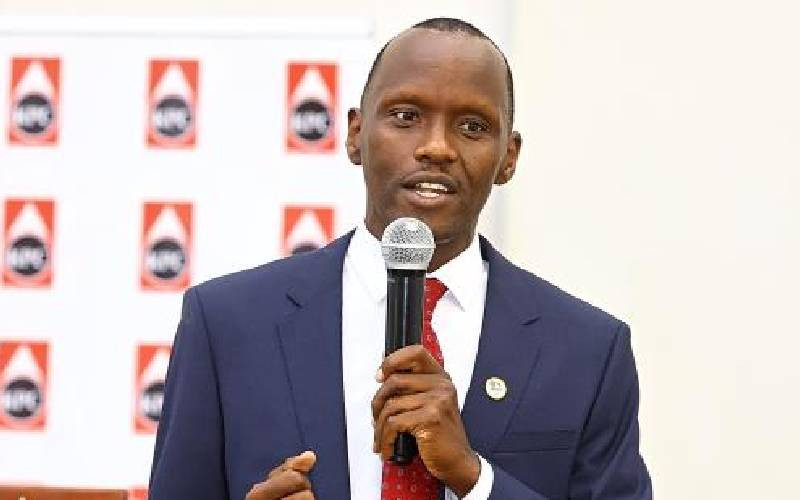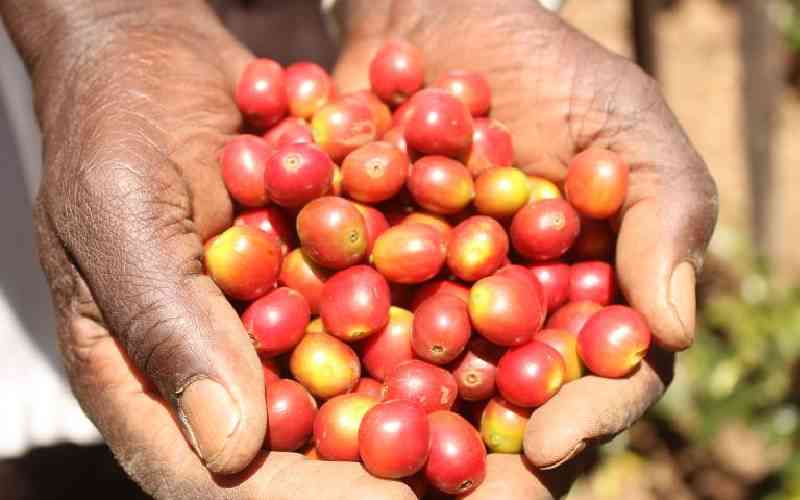By Njiraini Muchira
Plans by the Kenya Pipeline Company (KPC) to replace the derelict oil pipeline from Mombasa to Nairobi hang in the balance due to lack of funds.
More than a year after KPC unveiled plans to construct a new pipeline from Mombasa to Nairobi, the process is yet to gather steam.
Business Weekly has since established that the government failed to convince local commercial banks to finance the project billed at over Sh27 billion.
Efforts by the government, through the Ministry of Energy, to convince local commercial banks to form a consortium and finance the project have not been successful — something that now puts the project in jeopardy.
Failure to secure funding for the new pipeline — supposed to be constructed over the next two years — is causing panic in the petroleum industry. A survey conducted on the existing line had earlier showed the infrastructure cannot continue being in operation beyond 2014.
The delays in constructing the new pipeline that is expected to significantly improve flow of petroleum products between Mombasa and Nairobi will continue exposing Kenyans to major shocks in relation to fuel supply.
Already, the confusion dogging the project is having negative impact on the industry as concerns are being raised that the inefficiencies in the existing pipeline are being exploited to bring in petroleum products irregularly.
This is because the obsolete pipeline has few control mechanisms to prevent instances of abuse not only by oil marketers but also by corrupt KPC personnel.
Derelict system
Diversion of products meant for neighbouring markets to being sold in Kenya and instances of hoarding of products within KPC systems are said to be taking place due to the loopholes existing in the archaic pipeline infrastructure.
The petroleum industry in the country has all along operated in a ‘full time crisis mode’ and the country has been treated to theatrics of the absurd, with the scenario worsening in the recent years.
Besides numerous scandals emanating from KPC, there have been frequent shortages of petroleum products mostly attributed to capacity constraints among state agencies in the industry as well as failure by private sector players to deliver products after they have been contracted under the open tender system (OTS).
Numerous proposals have been floated to tackle the challenges that eventually end up hurting the public including strategic oil reserves and upgrade of petroleum handling facilities.
Despite being out-dated and way beyond its lifespan, the existing pipeline — known as Line I in industry parlance — is unable to meet growing demand for petroleum products and also continues to pose major risks akin to the over 100 deaths it caused last year in Sinai following a spillage.
Stay informed. Subscribe to our newsletter
“The existing pipeline is overstretched and although the government understands the urgency of a new line, local banks are not excited about financing it,” said a source privy to the project.
When contacted by Business Weekly, KPC managing director Selest Kilinda refused to talk about the project insisting that it is still in progress.
However, Business Weekly has established that despite KPC twice putting out tenders seeking for a consultant to oversee the project, the first time in October last year and again in February this year, progress has been minimal with only a preliminary design for the new line undertaken.
At the time of the invitation to tender in February, KPC promised to announce the winning bidder who would come up with the final design and oversee the implementation of the project soon enough. However, nine months down the line, the contract is yet to be awarded.
Aging pipeline
“The main objective of the project is not only to replace the aging pipeline but also to ensure sustained, reliable and efficient supply and distribution of petroleum products in the region,” said KPC in the tender statement.
According to initial projections for the new pipeline covering 453km and expected to be 14 inches in diameter, the contractor was to be appointed by the end of this year while construction should have started early next year.
Once a consultant to design and supervise construction works was identified, it was estimated that it would take between 18 months to two years to complete the pipeline. The new line would serve the country and the region for a period of 30 years.
With Kenya and Uganda consuming a combined 500 million litres of petroleum products every month, the industry is now faced with the unfortunate reality that it might have to depend on the existing line indefinitely.
The existing pipeline can only pump 324 million litres per annum, a scenario that has forced oil companies to largely depend on road transport to move products from the entry point in Mombasa to other parts of the country and the region.
Constructed in 1978, the existing pipeline is already past its lifespan and is unable to meet rising demand for petroleum products despite the Kenyan government investing Sh7.8 billion in 2008 to increase its flow rate from 440,000 litres per hour to 880,000 litres per hour.
The line is unable to operate to full capacity because it is a patchwork with massive internal and external corrosions and several dents. International standards stipulate that oil pipelines should have a lifespan of between 25 to 30 years.
A study conducted by consultancy firm Phil Ltd on the existing line showed the pipeline has numerous defects including four million features characteristic of internal corrosion, about 20,000 features characteristic of external corrosion, 293 features characteristic of manufacturing defects, 107 dents, 40 ferrous metal objects and 251 welded shell repairs.
Apart from Kenya, landlocked countries like Uganda, Rwanda, Burundi and parts of the Democratic Republic of Congo depend on the pipeline for transportation of petroleum products.
Tainted history
According to sources, the government has been trying to sale the idea of financing the project to local commercial banks but so far they have been cagey due to KPC’s tainted history and knack for generating controversies.
The government has been hoping to replicate the strategy employed at the Kenya Petroleum Refinery Ltd (KPRL). Under the arrangement, the State would hire one of the multi-national commercial banks operating in the country to arrange for a syndicated loan with a long repayment period.
In the case of KPRL, the government hired Standard Chartered PLC to arrange for a Sh93 billion financing deal to upgrade the facility.
“The government has already commenced negotiations with local financers to have in place a consortium of local banks finance the project,” said Energy Permanent Secretary Patrick Nyoike sometime back.
But the banks have been wary of the deal going by KPC’s past, particularly the Triton fiasco that left the books of several banks badly bruised.
The scandal, which saw KPC officials release 126 million litres of oil to Triton Petroleum in a well-crafted scheme, cost a retinue of commercial banks including Kenya Commercial Bank (KCB) losses adding to billions of shillings.
“Local banks that were affected by the Triton saga are yet to recover. It is, therefore, quite imprudent for the government to expect them to participate in a deal to finance a project by KPC,” said an oil industry expert.
He added that for the project to be implemented on schedule, the government might be forced to explore alternative financing options including inviting an investor to undertake the project and leasing it to KPC.
“In fact, the best option is to bring an investor on board to construct the line and have KPC operate it,” said the expert.
High prices
The challenge for the option, however, is that it could translate to high prices for petroleum products if not well structured.
As the country implements the Vision 2030 blueprint, demand for petroleum products is expected to continue on an upward trend and the new pipeline has been identified as critical in facilitating transportation of products.
According to a study conducted by the Kenya Institute for Public Policy Research and Analysis (Kippra) in 2010 on behalf of the Energy Regulatory Commission (ERC), demand for petroleum products is expected to continue increasing at an average of seven per cent per annum.
The study, titled A Comprehensive Study and Analysis on Energy Consumption Patterns in Kenya, notes that the energy sector contributes about 9.4 per cent of the gross domestic product (GDP) with the petroleum sub-sector, electricity and fuel wood contributing 8.4 per cent, 0.6 per cent and 0.4 per cent respectively.
The report adds that consumption of petroleum products, excluding kerosene and jet fuel, has on average been increasing with the transport sector that includes land, water and air transport being the largest consumer of petroleum products followed by manufacturing, power generation and agriculture.
 The Standard Group Plc is a
multi-media organization with investments in media platforms spanning newspaper
print operations, television, radio broadcasting, digital and online services. The
Standard Group is recognized as a leading multi-media house in Kenya with a key
influence in matters of national and international interest.
The Standard Group Plc is a
multi-media organization with investments in media platforms spanning newspaper
print operations, television, radio broadcasting, digital and online services. The
Standard Group is recognized as a leading multi-media house in Kenya with a key
influence in matters of national and international interest.
 The Standard Group Plc is a
multi-media organization with investments in media platforms spanning newspaper
print operations, television, radio broadcasting, digital and online services. The
Standard Group is recognized as a leading multi-media house in Kenya with a key
influence in matters of national and international interest.
The Standard Group Plc is a
multi-media organization with investments in media platforms spanning newspaper
print operations, television, radio broadcasting, digital and online services. The
Standard Group is recognized as a leading multi-media house in Kenya with a key
influence in matters of national and international interest.








